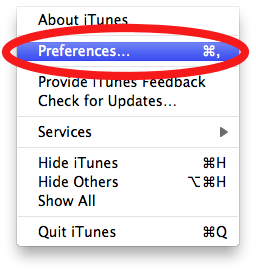
For the previous two generations of the iPhone, there was really only one choice of a case for getting the most protection possible while still being able to use the iPhone: the Otterbox Defender ($25). And with the new version of the Defender for the iPhone 4 , Otterbox once again impresses us with its attention to detail and solid industrial design. But the Defender’s superb protection comes at a price, chiefly added bulk (lots of added bulk) and crippled access to the iPhone’s ports. But after testing the case for the past three weeks, we were surprised with how little the case got in the way of using the major features of the iPhone. Simply put, the case is the most protection you can get for the iPhone and still be able to use the iPhone. *Update* Otterbox recently redesigned to Defender to fit both versions of the iPhone 4 (Verizon and AT&T)

To create its turtle shell-like protection, the Defender offers up three different materials: a clear plastic screen protector, which is permanently attached to the case and covers the iPhone’s front glass screen; a hard-shell polycarbonate plastic that serves as the case’s bone structure and makes up the majority of the case’s bulk; and a soft-silicone rubber that slips over the hard-shell layer and offers shock absorption and improved grip thanks to its textured surface.

Assembling and disassembling the three sections of the case around the iPhone takes some work. There are numerous grooves and slots that the pieces must fit into in order to come together properly. The silicone layer is particularly troublesome in that the edges and tabs occasionally come undone if not put together properly and must be tucked in or neatened. I developed quite a habit of constantly fidgeting with the case. But once familiar with how the tabs stay fastened, the case generally becomes less bothersome.

For protection, the case combines silicone rubber’s shock absorption with the rigid strength of polycarbonate hard plastic. Its thickness combined with the dual-materials makes it a tank, preventing damage to the precious iPhone 4 inside. The case’s clear screen protector helps prevents scratches to the iPhone’s screen. Although we should note the iPhone’s Gorilla glass is more scratch-proof than the case’s plastic, the case is cheaper to replace than the iPhone’s screen. One thing we didn’t like about the case’s screen protector is that it attracts finger grease way more than the iPhone’s screen, even though Otterbox claims improved finger-print resistance.
Most impressive to us about the Defender is that it generally doesn’t get in the way of everyday use of the iPhone. The buttons all work as expected despite being buried underneath all those layers of silicone and plastic. The case covers the home, sleep, and volume buttons with its own raised areas of silicone that create simulated buttons, and which worked accurately when pressed.

The case protects the openings for the docking port, ringer switch, and headphone jack with silicone tabs. To access those areas, you must peel back the tabs and then insert the headphone jack or USB cord. When you’re finished with the ports, you must close up the tabs else they’ll flap about. It’s a bit tedious in the long run, and we’re not sure the tabs are needed at all as the case is in no way waterproof.

The general drawbacks to the Defender lie in the area of accessibility, or should we say, convenience of accessibility. All the features of the iPhone are accessible, just much less so. For example, you won’t be able to simply flip the ringer switch, you must first open the tab, dig down with your finger, flip it, then reapply the tab when you’re finished.
Another area that suffers from loss of accessibility are the edges of the iPhone’s screen. The case has a thick rim that sticks up a quarter of an inch above the iPhone’s screen and offers excellent protection should the iPhone land on that side. Unfortunately, the rim interferes with touching the extreme sides of the screen, for example, when typing letters like P and Q on the iPhone’s keyboard. It doesn’t so much prevent your finger from touching those areas as makes it uncomfortable when part of your finger bumps up against it.
 If you like the idea of owning the “world’s thinnest smartphone,” you can forget about it with the Defender. The case adds considerable weight (2.08 ounces) and expands the iPhone 4’s dimensions to 4.85 inches long by 2.67 inches wide by 0.66 inches thick (from the iPhone 4’s original dimensions of 4.5 x 2.31 X 0.37 inches, respectively). This takes the iPhone from feeling like a half a deck of playing cards to a full deck of children’s flash cards.
If you like the idea of owning the “world’s thinnest smartphone,” you can forget about it with the Defender. The case adds considerable weight (2.08 ounces) and expands the iPhone 4’s dimensions to 4.85 inches long by 2.67 inches wide by 0.66 inches thick (from the iPhone 4’s original dimensions of 4.5 x 2.31 X 0.37 inches, respectively). This takes the iPhone from feeling like a half a deck of playing cards to a full deck of children’s flash cards.
If you’re the type who likes a fashionable case, the Defender probably isn’t for you, as it’s all function and very little form. It’s currently available in one color, matte black (previous generations added white, pink, and yellow). The matte color does, to its credit, help camouflage all the unsightly angles and crevices created by the case’s various tabs and openings. The case has a clear-plastic porthole opening on its back that displays the Apple logo, in case you need to show the world that you do, indeed, own an iPhone.
In terms of feel, the case is generally pleasant to hold, mostly thanks to its soft, textured silicone surface. This same texture also helps improve grip—improve it, that is, if you can still wrap your hands around the case’s bulky structure. But to be fair, my hands are not large by most standards, and I was still able to hold the case comfortably.
The Defender is too thick to fit in any iPhone dock we’ve seen, it won’t even fit n the widest-mouthed universal docks like the Griffin Simplifi or Apple’s Universal dock. You’ll have to resort the iPhone’s USB cable in order sync and charge your iPhone 4.

Included with the case is a separate belt-clip case holder that is rather bulky itself. The Defender snaps into the case and is tightly held—no bouncing around while walking.
Otterbox Defender for iPhone 4
Price: $25
Art of the iPhone’s Rating: ★★★★★ (5 stars out of 5)
Review Summary: Offers best-in-class protection for the iPhone 4 and 4S while still providing access to the iPhone’s ports, buttons, and features.
Reviewed by: Art of the iPhone












More pictures for You:
http://img638.imageshack.us/slideshow/webplayer.php?id=dsc3599w.jpg
http://www.flickr.com/photos/53690273@N03/sets/72157624892368316/
Good pictures, thanks Zorik. Recommend checking out the Flickr set.
It appears that the iPhone 4 can only be charged with the regular Apple charger and you cannot use portable or stand up type chargers with this phone. Anyone have a solution?